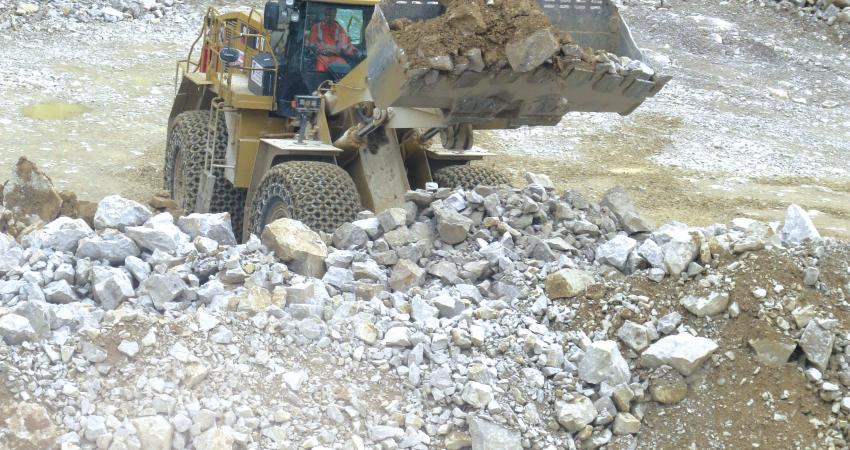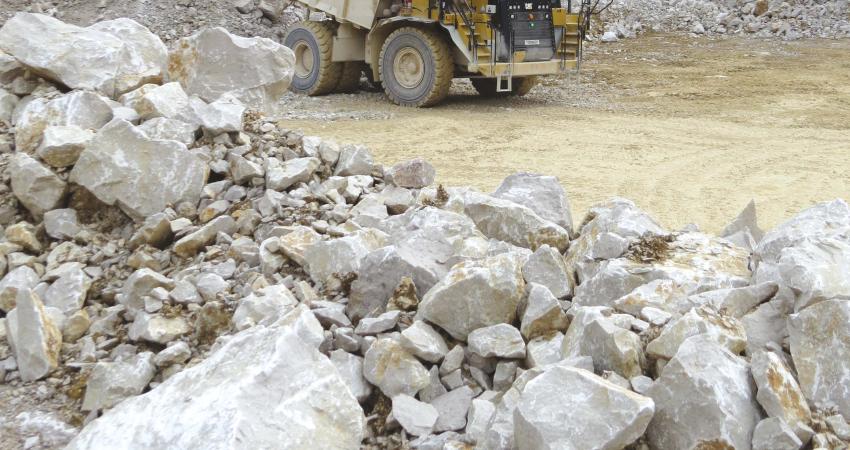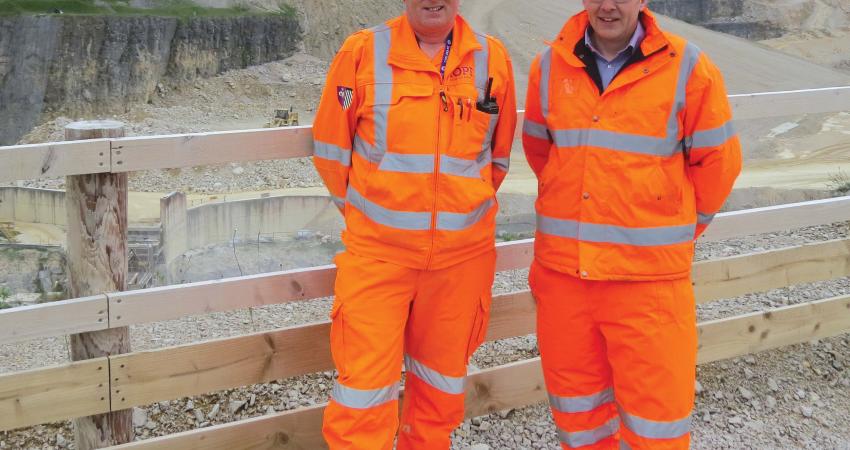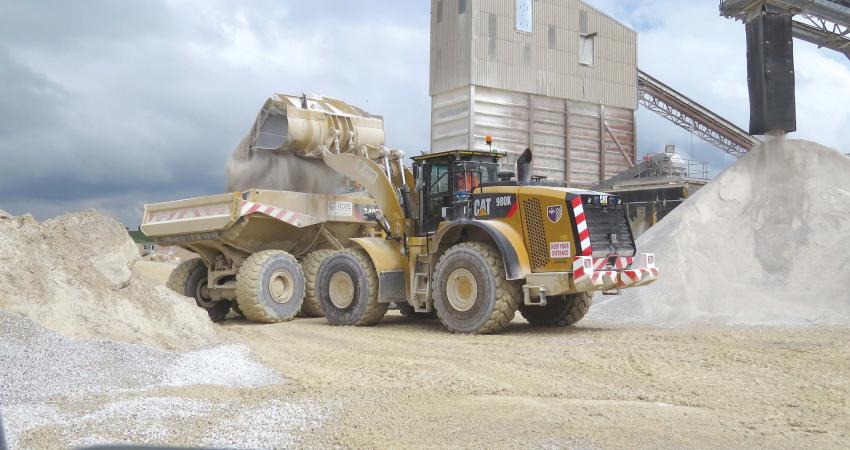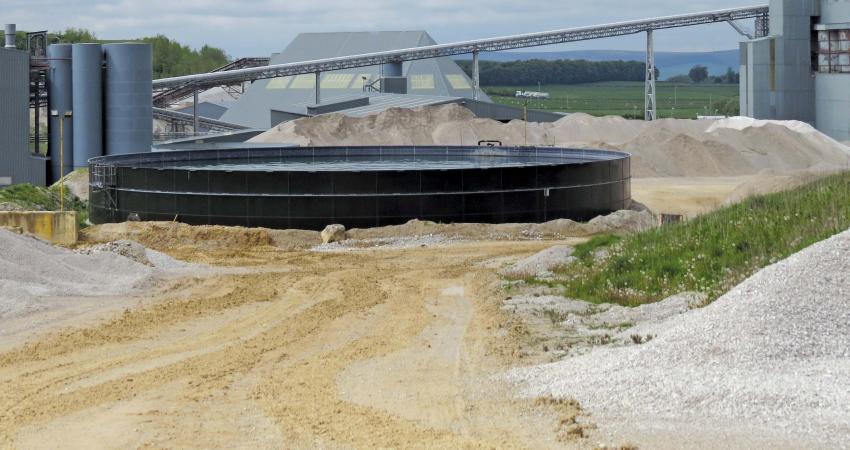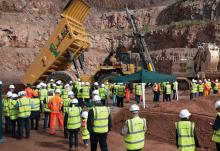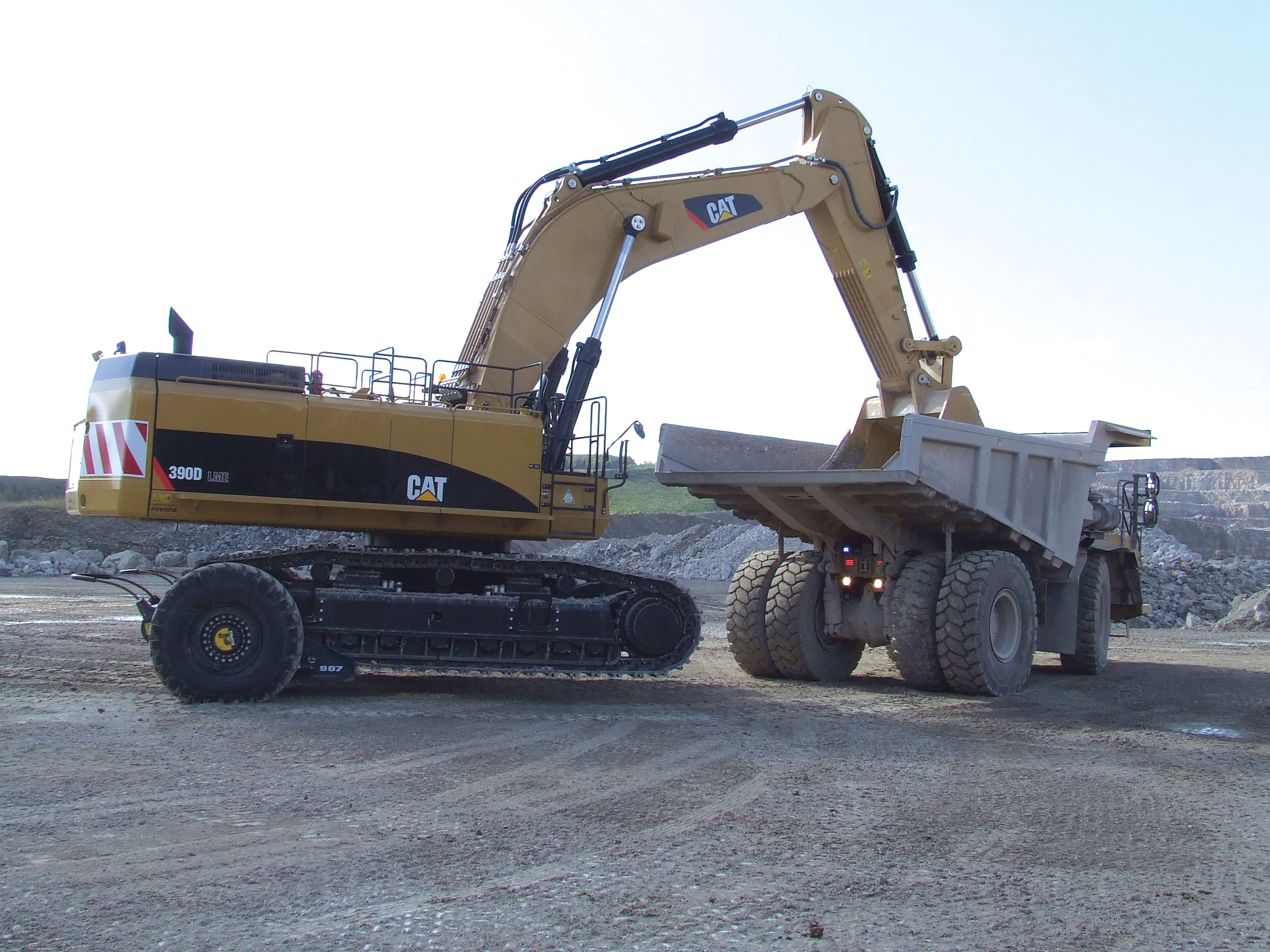
An H&S issue at a UK quarry has been overcome using a Finnish-made system to move an excavator around the site
A special piece of equipment has been used by
The 328 hectare Lafarge cement manufacturing site at Hope, County Derbyshire in England’s Peak District, was presented with the H&S challenge, for which a solution was supplied using an innovative, Finnish-built transportation system.
The site is divided into three areas: the actual works and batching plant, which cover 63 hectares; a 109 hectare shale quarry; and a limestone quarry that covers a further 156 hectares.
The limestone quarry operates 12 benches (each 15m high) covering three geological periods of Carboniferous limestone. All have to be mined simultaneously due to the differing silica content of the limestone, which is high in the top benches; extremely high in the middle; and low at the bottom. As a result there has to be a constant mix of the mined material. Cement has to be made from all three types of limestone.
Blasting takes place on average 3-4 times/week with each blast producing between 15,000-20,000tonnes.
The [UK]
Finding an excavator with a suitable combination of loading power and reach was one challenge: finding a method to allow that machine to move quickly around the site was another.
“Although we have great faith in our local
The excavator solution came in the shape of a
The Sleipner system allows the excavator to drive onto the dollies, (idler first) releasing the automatic braking system. The excavator turns around and lowers its boom into the back of a tipper, using the bucket as an anchor, and effectively turning the excavator into a wheel-mounted trailer. It is said this can be towed around the site at around ten times the travel speed of the excavator under its own power.
Once on station, the excavator operator simply raises the boom releasing it from the tipper, and drives off the Sleipner wheels.
Although the Finnish-developed Sleipner system is used extensively around the world, the Hope Quarry is the first installation in the UK, and is the culmination of a protracted approval process that took more than 12 months. Indeed, Finning even took a representative of the HSE to a quarry in Germany to show a Sleipner system in action, a move that ultimately convinced the HSE of the system’s efficacy.
The system is built to accommodate 30-120tonne machines on a four-wheel system, and 190-400tonne machines on the original eight-wheel version form.
According to Sleipner export and marketing manager Nichole Beyer, the Sleipner system is simple to use and has a payback time of less than six months.
“Customer experience around the world has demonstrated an average 5% increase in productivity, but where most companies make real savings is in the reduction of undercarriage wear,” she says. “Most excavators will go through three sets of tracks in a lifetime. At more than £50,000 [¤60,000] per set, there are significant cost savings to be made if equipment owners can safeguard those tracks by using our system.
“Our system means that the machine can be returned to the workshop in a fraction of the time, protecting the engine and hydraulic lines from the ever-present threat of dust contamination associated with open-air repairs.”


